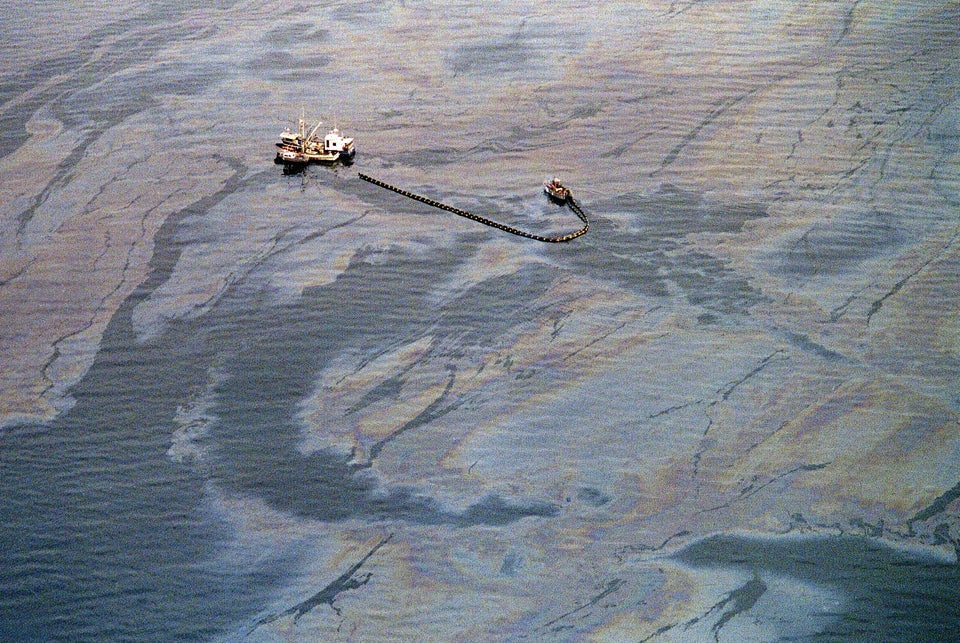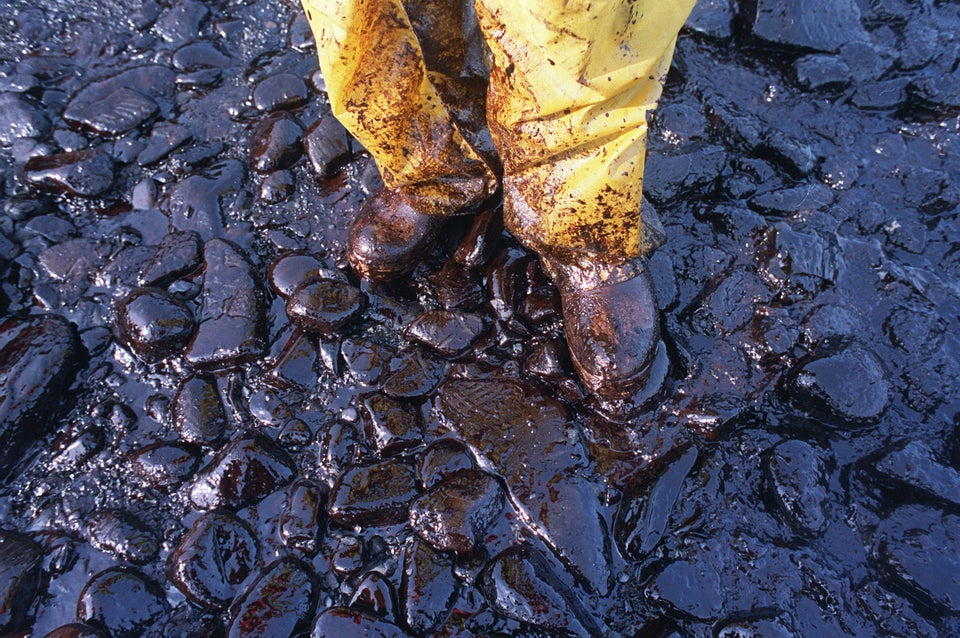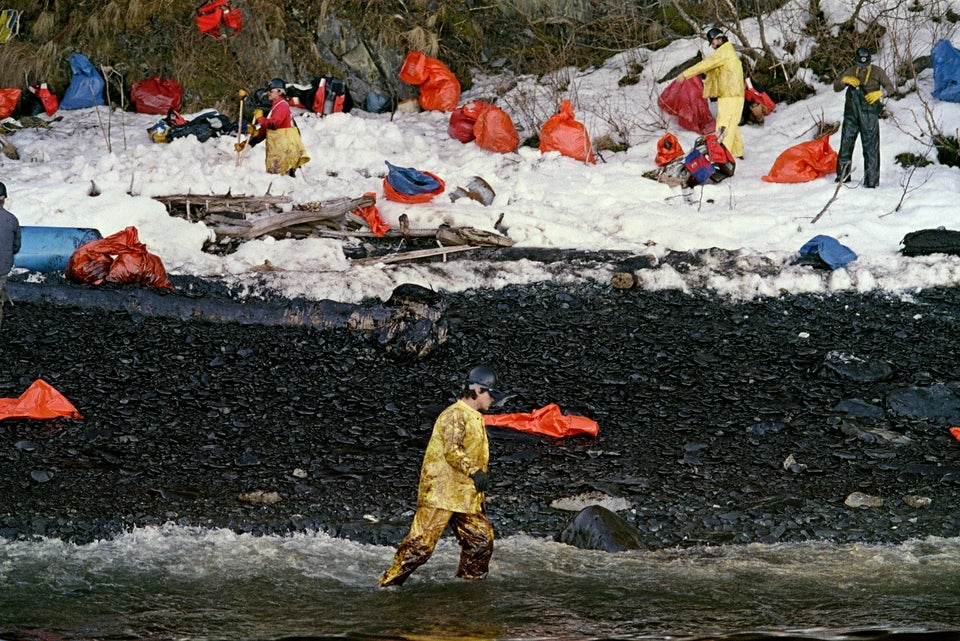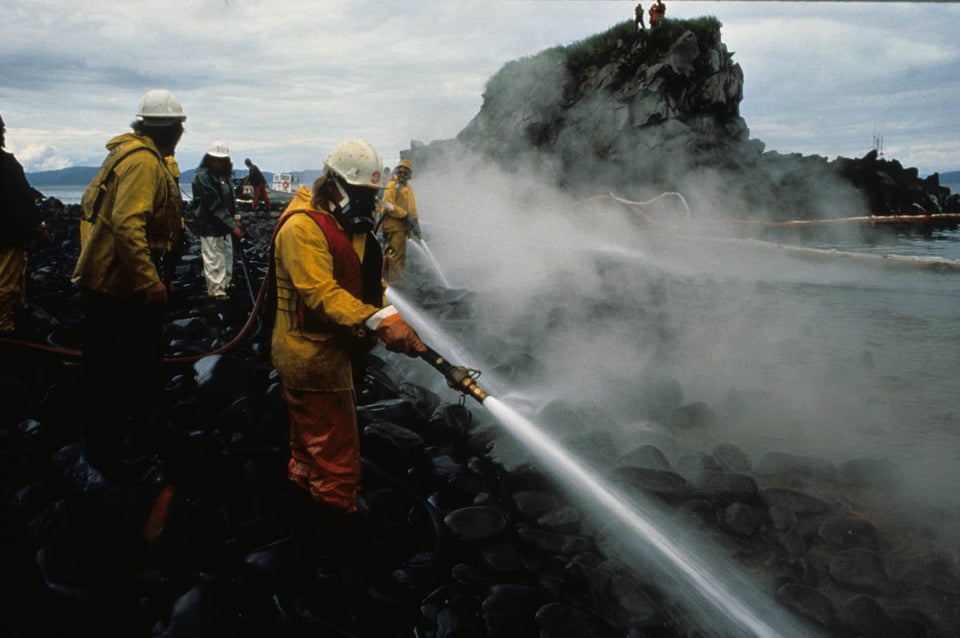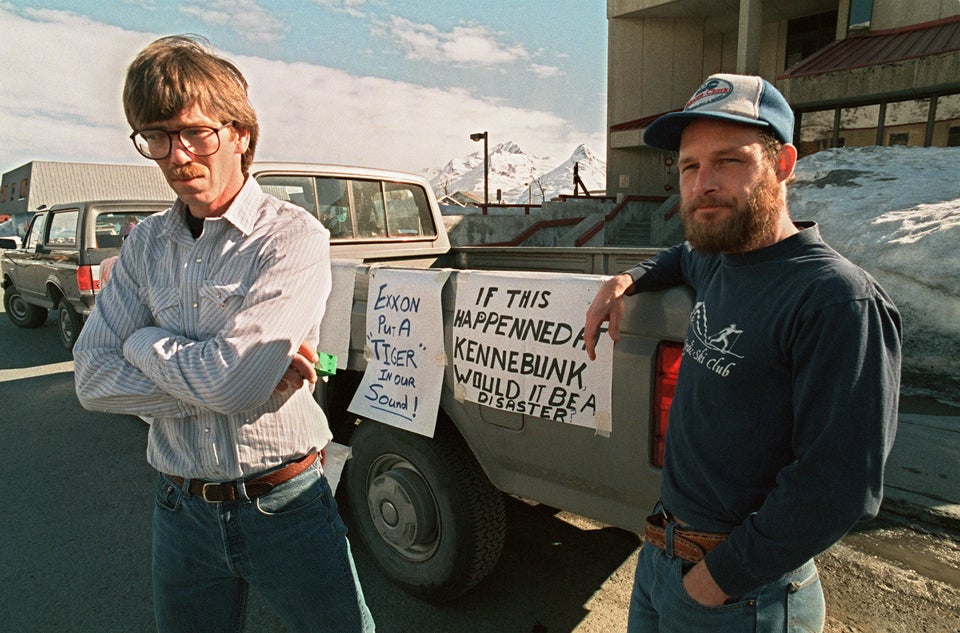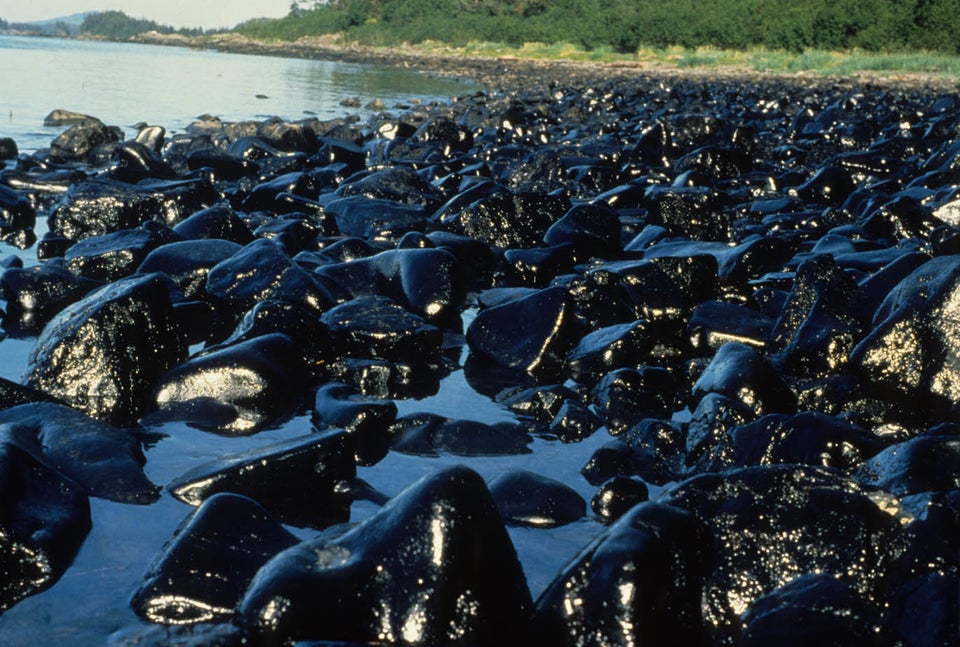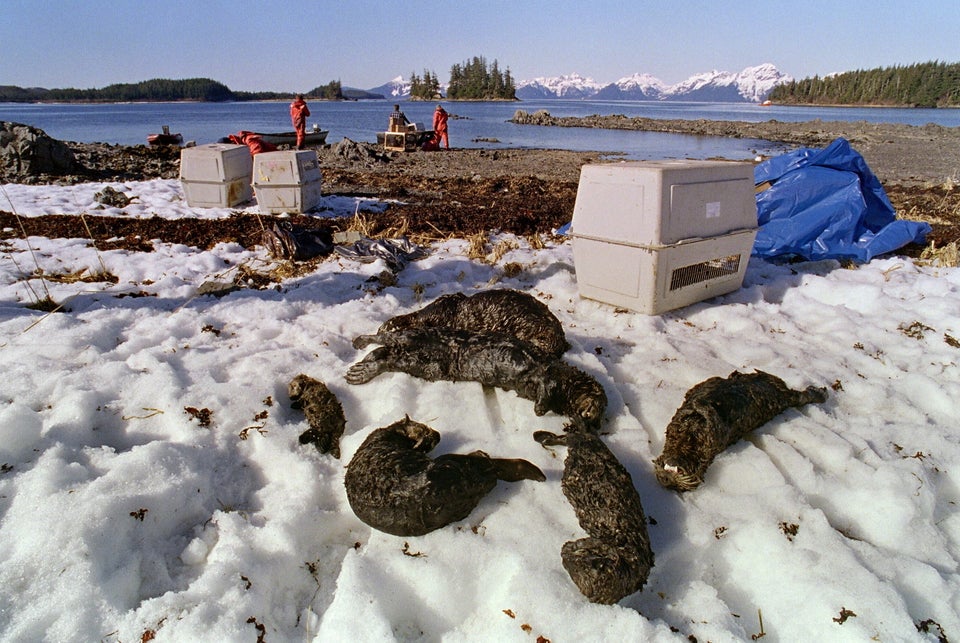March 24, 2014 marks the 25th anniversary of one of the worst environmental disasters in U.S. history. The Exxon Valdez oil spill began when a 987-foot-long oil tanker ran aground on a reef in Prince William Sound, Alaska. The spill stood as the worst in U.S. history until BP's Deepwater Horizon spill in the Gulf of Mexico in 2010.
The Exxon Valdez released an estimated 10.8 million gallons of crude oil before the spill was contained, fouling about 1,300 miles of coastline. The remote location of the spill and a delayed and inadequate response from Exxon and Trans-Alaska Pipeline operator Alyeska made matters even worse.
A recent federal report showed that sea otters have recovered to their pre-spill numbers in the most affected areas, but many serious impacts from the 1989 spill still linger even a quarter century later. In fact, small amounts of oil are still visible on beaches in the Gulf of Alaska.
The images below reveal the dramatic effects of the spill and its enormous toll on the wildlife, landscape and people of southern Alaska.
CHRIS WILKINS/AFP/Getty Images
An oil skimming operation works in a heavy oil slick near Latouche Island in the southwest end of Prince William Sound on April 1, 1989.
CHRIS WILKINS/AFP/Getty Images
Three tugboats (R) push the oil tanker Exxon San Francisco (C) into place beside the crippled tanker Exxon Valdez (L) in Prince William Sound on March 30, 1989 to begin off-loading the remainder of crude oil in Valdez.
John Gaps III/AP
Thick crude oil washed that up on the cobble beach of Evans Island sticks to the boots and pants of a local fisherman in Prince William Sound, Alaska on April 11, 1989. (John Gaps III/AP)
CHRIS WILKINS/AFP/Getty Images
An oil cleanup worker walks through the oily surf at Naked Island on Prince William Sound on April 2, 1989 as beach cleanup goes on in background.
Bob Hallinen/Anchorage Daily News/MCT
A dead sea otter coated with crude oil from the Exxon Valdez oil spill was found on the beach of Green Island in Prince William Sound, Alaska on April 2, 1989. (Bob Hallinen/Anchorage Daily News/MCT)
CHRIS WILKINS/AFP/Getty Images
Fishermen Greg Will (L) and Matt Kinney, both of Valdez, stand in protest outside an Exxon news conference room which was closed to local residents on April 2, 1989.
Oily rocks glisten in the sun on Green lsland (Prince William Sound). This section of beach, which was signed off as being environmentally stable by both Exxon and the Coast Guard, was re-oiled July 4, 1989. (Photo courtesy of
Alaska Resources Library & Information Services)
CHRIS WILKINS/AFP/Getty Images
One baby and five adult oil-soaked sea otters lie dead on Green Island beach on April 3, 1989 in Prince William Sound.
CHRIS WILKINS/AFP/Getty Images
Cleanup workers scrub large rocks on the oil-covered beach of Naked Island in Prince William Sound on April 2, 1989.
(Photos continue in the slideshow below.)
